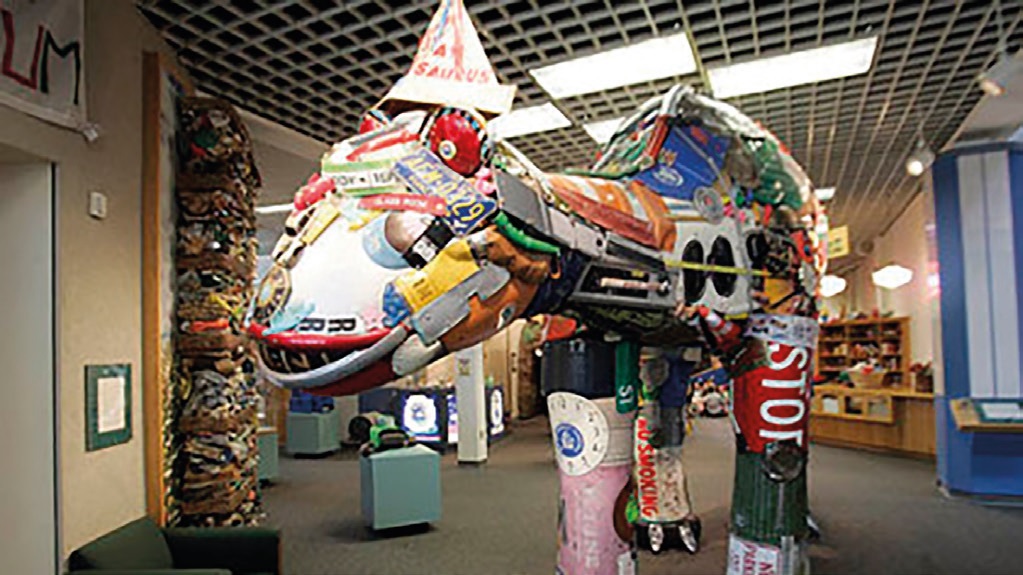Trash Museum
Pennsylvania sculptor Leo Sewell, who grew up near a dump, created a huge dinosaur called "Trash-o-saurus" by using only trash. The dinosaur is 7.3 meters long. The sculpture includes old "no parking" signs, cell phones, shoes, sunglasses, and plastic toys. Trash-o-saurus weighs 907 kilograms. Visitors are given a list of things to find on the dinosaur but it is not that easy.
The Garbage Museum is located in Stratford, Connecticut. It opened in 1993. This was before being "green" was cool. "We don't know of any other garbage or recycling museums in the country," said Paul Nonnenmacher, the manager of the recycling centre.
The Garbage Museum has many children visitors and the museum wants them to have fun as they learn. Visitors can watch the recycling centre’s sorting area. Each year, trucks dump a total of 60,000 tons of plastic bottles, cans, and other recyclables there. Visitors learn that they crush the materials and sell the crushed materials to companies. The companies make new items out of them. Some buyers even make carpets and jackets out of the recycled plastic.
"You can see where all the garbage goes," said 10-year-old Brooke Hiatt of Milford, Connecticut. "You can see how and where it goes and the process of recycling. I've learned that recycling is better than just wasting. If you waste, you can pollute your environment."
The museum also lets visitors play a game. It is called "Trash Bash." Players wear helmets. They stand behind chain-link fence doors. Players must answer questions about trash. If their answer is wrong other players can dump trash on them.
The environmentally friendly art doesn't end with Trash-o-saurus. The museum has a life-size sculpture of a person. They made it from crushed milk containers. They are stuck together with pipe cleaners.
A record 32,000 people visited the Garbage Museum in 2008 but the museum is having money problems.
It costs $200,000 to $250,000 to run the museum each year. Museum leaders are trying to raise money. They are asking people to give money. They are also selling recycled glass tiles for $50 a piece. People can put messages on the tiles. The tiles will be shown on a museum wall.
Many visitors hope the museum will be open for a long time. They agree with museum leaders that environmental education is important.

